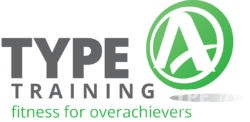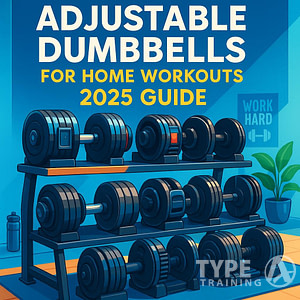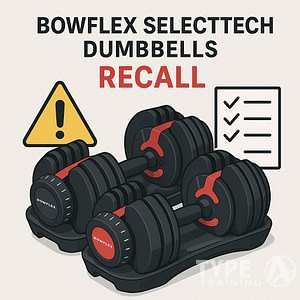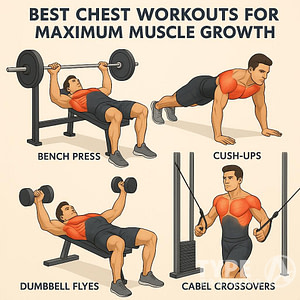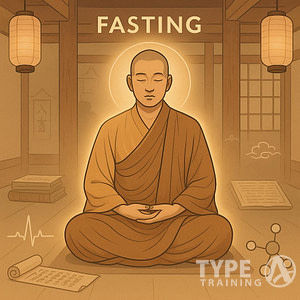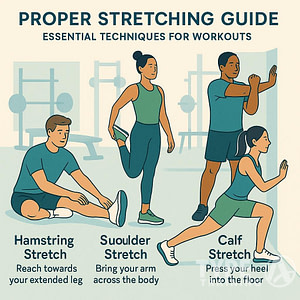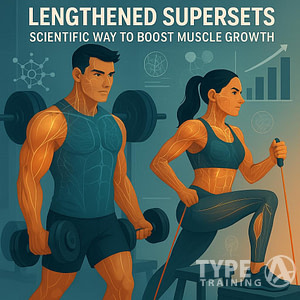Engaging in regular physical activity is vital during your teenage years. This period of rapid growth and development benefits greatly from exercise for teenagers. Exercise for teenagers not only builds strong muscles and bones but also helps to establish healthy habits for life.
From yoga and bodyweight exercises to structured sports, there are numerous ways you can move your body for health, strength, and stamina.
Incorporating exercise for teenagers into daily routines can be fun and engaging. Activities such as sports, dance, and outdoor games promote both physical fitness and social interaction.
As you navigate through adolescence, physical activity can also play a significant role in managing stress and promoting mental well-being. Finding exercises that you enjoy and feel motivated to do can make a significant difference in your overall fitness journey.
Popular posts:
For many, finding the right type of exercise for teenagers can significantly enhance their motivation and enjoyment levels.
Benefits of Exercise for Teenagers
Exercise for Teenagers is an important factor; it’s a cornerstone for robust mental and physical well-being during these formative years. The benefits of exercise for teenagers extend from elevating mood and mental acuity to ensuring healthy growth and strong bone development.
Boosting Mental Health
Exercise provides significant benefits for your mental health. It triggers the release of endorphins, known as ‘feel-good’ hormones, which act as natural stress-relievers and mood lifters.
Regular exercise for teenagers can foster better academic performance and social interactions.
Moreover, regular physical activity has been linked to improved sleep, reduced symptoms of depression, and an increase in self-confidence. The positive impact on your mental health is equally important as the physical benefits, as they contribute to your overall sense of well-being during the challenging period of puberty.
Integrating exercise for teenagers into daily life can lead to lifelong health benefits.
Enhancing Physical Health
Your physical health receives a substantial boost from regular exercise. It’s not just about building muscle strength; exercise enhances cardiovascular fitness and helps manage weight.
Incorporating different forms of exercise for teenagers is critical for developing a well-rounded physical fitness regimen.
You can expect improved endurance and aerobic fitness, factors that are vital as you navigate the demands of teenage life.
Additionally, being active reduces the risk of chronic diseases and helps you to maintain a healthy lifestyle (Mayo Clinic Q and A).
Supporting Healthy Growth and Development
During the teenage years, your body is going through rapid growth and development. Exercise plays a pivotal role in supporting and facilitating this growth.
Regular physical activity promotes stronger bones and improves muscle coordination and balance. These benefits continue into adulthood, providing a foundation for a healthy, active life.
The structured guidance of a workout plan can also ensure that you are performing exercises safely and effectively, maximizing these critical developmental benefits.
Understanding the Basics of Teen Fitness
Understanding the diverse forms of exercise for teenagers helps empower them to make informed choices about their health.
Engaging in regular physical activity is essential for your health and well-being as a teenager. The aim is to build a fitness regimen that is enjoyable, effective, and tailored to your developmental stage.
Exercise for teenagers should include activities that spark joy and interest to maintain long-term engagement.
Defining Fitness Goals
To start, identify what you want to achieve with your exercise routine. Are you looking to maintain a healthy weight, improve in a sport, or simply make your day-to-day activities more fun and energetic?
Setting clear, achievable goals will help you stay motivated and measure your progress. Consider including:
- Aerobic activities: Such as running or swimming for cardiovascular health.
- Strength training: Like resistance exercises to build muscle and strengthen bones.
- Flexibility exercises: To improve your range of motion and prevent injuries.
Tailoring Exercises to Teenagers
Teen fitness should align with age-appropriate guidelines to ensure safety and maximize benefits. Your body is still growing, so it’s important to choose activities that support your development without causing harm.
Keep these points in mind:
- Adaptability: Your routine should grow with you. What works now may need adjustment as you mature.
- Professional guidance: Especially when lifting weights or performing complex movements, proper form is critical to prevent injury.
- Enjoyment: Choose sports or activities you find fun, as you’re more likely to stick with them.
For health and fitness, the CDC recommends at least 60 minutes of moderate-to-vigorous physical activity daily.
As you build your personalized exercise for teenagers plan, consider a mix of activities that boost endurance, strength, and flexibility to create a balanced, healthy lifestyle.
Developing a Balanced Exercise Routine
When constructing your exercise plan, combining cardiovascular activities, strength training, and flexibility and coordination exercises is crucial to achieving a holistic approach to fitness.
Incorporating Cardiovascular Activities
Cardiovascular (cardio) exercise should be a cornerstone of your routine. Engaging in activities like running, cycling, or swimming can significantly improve your heart health and stamina.
Regular cardio is a crucial component of any exercise for teenagers routine.
Aim for at least 60 minutes a day of moderate to vigorous physical activity, with a focus on keeping your heart rate up.
Benefits of Strength Training
Strength training isn’t just about lifting weights. It involves using resistance to build muscle strength and endurance.
Begin with lighter resistance like bodyweight exercises, and progressively incorporate free weights or resistance bands to challenge your muscles and ensure proper growth and repair.
This adaptability is particularly important when considering the unique needs of exercise for teenagers.
Importance of Flexibility and Coordination
Enhance your routine with exercises that boost flexibility and coordination. This can include yoga, dynamic stretching, or balance-focused activities.
These practices not only aid in injury prevention but also contribute to better overall physical performance by improving joint range of motion and neuromuscular coordination.
Ensuring your safety during exercise for teenagers is pivotal in maintaining your health and fitness without unnecessary setbacks.
Ensuring your safety during exercise is pivotal in maintaining your health and fitness without unnecessary setbacks. Knowing how to prevent injuries and understanding the risks of overtraining are key components of a safe exercise routine.
Preventing Injuries
To minimize the risk of injuries, start every workout with a warm-up and finish with a cool-down. This helps prepare your muscles and cardiovascular system for exercise and reduces the chances of muscle strains or joint problems.
Using appropriate gear is essential to support safe exercise for teenagers.
Incorporate a mix of stretching and light cardio exercises, such as jogging or jumping jacks.
Proper form is essential, too. Take the time to learn correct techniques, especially when it comes to strength training, to prevent undue stress on your joints and muscles.
Ensure you’re using the right gear. Supportive footwear is important for most activities, and specific sports may require protective equipment.
If you’re unsure what’s appropriate, seek guidance from a coach or fitness professional.
Understanding Overtraining Risks
Overtraining occurs when you exercise more intensely or frequently than your body can recover from, leading to decreased performance and potential injuries.
Symptoms include persistent muscle soreness, increased susceptibility to illness, and a general feeling of tiredness.
To avoid this, engage in moderation and listen to your body. Rest days are crucial as they allow your muscles to repair and grow stronger.
Balance in exercise for teenagers involves integrating various types of workouts for comprehensive health benefits.
It’s important to strike a balance between different types of exercise; combining aerobic, strength, flexibility, and balance training can prevent overuse injuries.
Keep a consistent schedule and mix low, moderate, and high-intensity workouts to allow adequate recovery.
If you experience pain or discomfort, don’t push through it; rest and, if necessary, consult a healthcare provider.
Age-appropriate exercise for teenagers equipment and techniques are crucial for safety and effective training.
Selecting the right exercise equipment and techniques is essential for teenagers. This ensures safety while promoting effective training and muscle development.
Using Resistance Bands and Weights
Resistance bands are versatile tools that can be incorporated into a workout routine to help develop strength without putting undue stress on your joints.
They are especially good for beginners because they provide a range of resistance levels that can grow with your strength.
Weights, including dumbbells, kettlebells, and a barbell, should be used with proper guidance to learn correct form and avoid injuries.
It’s advisable to start light and progressively increase the weight as you become more comfortable and your muscles adapt.
- Recommended Equipment:
-
- Resistance bands of varying levels
- Light dumbbells
- Adjustable barbell
Understanding how to choose exercise for teenagers that aligns with their interests can foster lifelong habits.
-
Bodyweight Movements and Form
Your body is a powerful piece of equipment itself, and bodyweight movements are fundamental for building strength and coordination.
Exercises like squats, push-ups, and lunges teach you to move with proper form and are foundational for progression onto more advanced techniques and equipment.
Form is critical to prevent injury and to maximize the benefits of your workout. Before moving on to weights or machines, ensure you have mastered the basics of bodyweight exercises.
Nutrition and Hydration for Active Teens
Proper nutrition and hydration are critical for your athletic performance and muscle growth. Understanding what your body needs helps you maintain a healthy weight and optimize your performance in sports and exercise.
Incorporating meals rich in nutrients can complement the exercise for teenagers approach to health.
Eating for Muscle Growth
Your muscles require a wide variety of nutrients to grow and repair after exercise. Protein is especially important because it provides the amino acids needed for muscle synthesis.
Aim for a balanced diet that includes lean proteins, whole grains, fruits, vegetables, and healthy fats. Eating a meal or snack that contains protein within 45 minutes after exercise can be particularly beneficial for muscle repair and growth.
-
- Protein sources: Chicken, fish, beans, nuts, and dairy.
Maintaining proper hydration levels is a vital aspect of any exercise for teenagers strategy.
- Carbohydrates: Whole grain bread, brown rice, fruits.
- Fats: Avocado, nuts, seeds, olive oil.
Hydration and Exercise
Staying hydrated is crucial for your performance and safety during exercise. Water regulates your body temperature, lubricates joints, and helps transport nutrients to give you energy.
If you start feeling thirsty, you’re already on your way to dehydration. Drink fluids before, during, and after physical activity to maintain optimum hydration levels.
The American Academy of Pediatrics recommends about 400 to 600 mL of water two to three hours before an event and 150 to 300 mL every 15 to 20 minutes during exercise.
Regular reminders of the importance of hydration during exercise for teenagers can improve performance.
- Before exercise: 16-20 ounces of water 2-3 hours prior.
- During exercise: 4-8 ounces of water every 15-20 minutes.
- After exercise: Replenish with 16-24 ounces of fluid for every pound lost.
Remember, your needs will vary depending on the intensity and duration of the activity, as well as environmental conditions. Don’t overlook the importance of electrolytes, especially during prolonged exercise or high heat. Sports drinks can be beneficial in these circumstances, as they help replace electrolytes lost in sweat.
Motivation and Setting Realistic Goals
Establishing clear objectives and finding the motivation to achieve them is paramount when you embark on an exercise journey. Remember that consistency and patience are your allies here, and aligning your goals with these virtues will directly impact your success.
Encouraging Consistency and Patience
Consistency is the bedrock of any successful fitness routine. Start by setting achievable and measurable goals to keep you on track.
For example, instead of aiming to “get fit”, aim to jog for 20 minutes, three days a week. This specificity enables you to monitor your progress and maintain your motivation.
Maintaining patience is equally critical. Physical changes won’t happen overnight, and setting this expectation can help you avoid disappointment. Recognize and celebrate small achievements along the way, as they are signs of progress towards your larger goal.
Creating a Supportive Environment
Creating a supportive environment for exercise for teenagers helps foster a positive fitness journey.
Your surroundings can have a profound influence on your motivation. Cultivate a supportive environment by surrounding yourself with people who encourage your efforts.
This could mean joining a sports club or simply exercising with a friend who shares similar fitness goals.
A role model can also be a significant source of inspiration. Identify someone who embodies the commitment and attitude towards exercise that you admire.
Learn from their approach to exercise for teenagers and let their success motivate you.
Frequently Asked Questions
Adolescents have unique fitness needs and this section addresses common queries related to teenage exercise routines, tailored advice for different age groups, and the health benefits of being active during these formative years.
What types of physical activities are recommended for adolescents daily?
Regular participation in group activities enhances the experience of exercise for teenagers.
Your daily physical activities should encompass aerobic exercises, muscle strengthening, and bone strengthening. Regular physical activity for at least 60 minutes can include cycling, swimming, or brisk walking.
What are some age-appropriate exercises for teenage girls looking to improve fitness?
Teenage girls can improve fitness through activities such as dance, gymnastics, or team sports like soccer.
Additionally, bodyweight exercises like squats and lunges help with muscle strength, and yoga can contribute to flexibility and balance.
How can a 16-year-old boy develop an effective exercise routine?
Develop a routine that incorporates cardiovascular training with strength training and flexibility exercises.
Begin with simple exercises, gradually increasing intensity and complexity. Establishing a balanced routine will support growth and correspond to shifting fitness levels.
How often should a 14-year-old engage in workouts for optimal health?
A 14-year-old should aim for daily physical activity. While the ideal is 60 minutes of exercise each day, at least 30 minutes of moderate to vigorous exercise three to five times a week is beneficial for maintaining health.
Can you suggest a beginner workout plan for teenagers?
A beginner workout plan could involve cardio exercises such as running or cycling, paired with simple resistance exercises like push-ups or sit-ups.
Gradually incorporate more varied exercises and increase duration as fitness improves. Always start with a warm-up and end with a cool-down to prevent injuries.
What are the health benefits of regular exercise for teenagers?
Regular exercise for teenagers can lead to improved cardiovascular health, better sleep, and stronger bones and muscles.
Exercise for teenagers contributes to a strong foundation for mental and physical health.
It’s also crucial for maintaining a healthy weight and preventing chronic diseases later in life. Exercise positively impacts mental health, reducing the risk of depression and anxiety.
Implementing regular exercise for teenagers encourages a healthier lifestyle overall.
